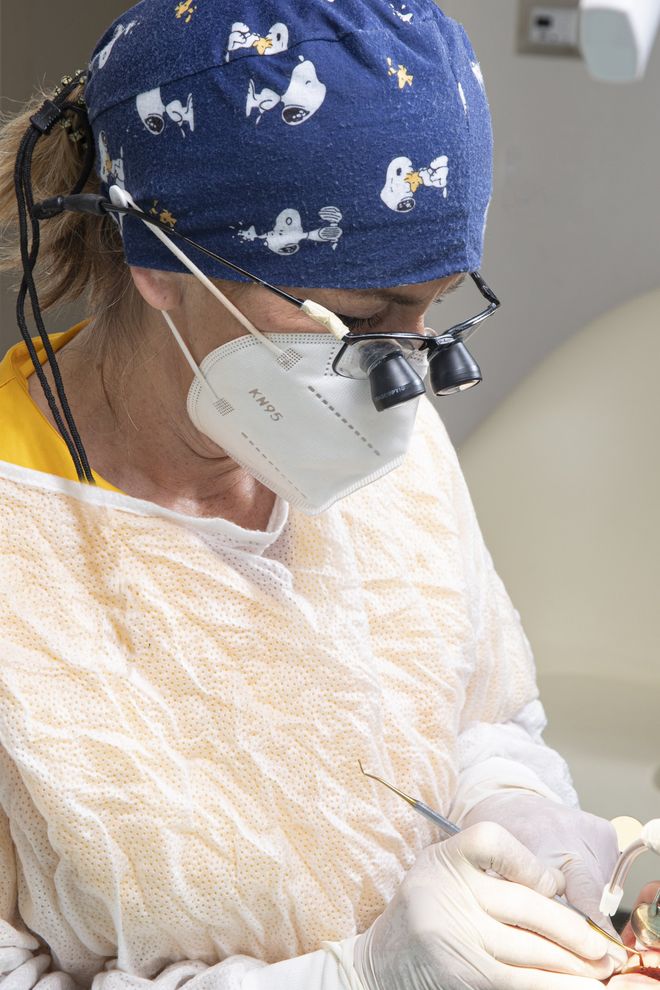IMPLANTING FIXED PROSTHESES
PROSTHESES
Dental prostheses is a piece of dental equipment which is used to help reinstate patients' normal working oral and chewing functions after losing one or more teeth. The main aim of dental prosthesis is to restore the normal chewing faculties by replacing the patient's original dentition with a completely new one, which is more resistant and will last for much longer.
There are different types of dental prostheses:
fixed prosthesIs
Fixed prosthesis replaces the natural teeth with a permanent and stable prosthesis. They are made of veneers, crowns or bridges which are cemented to natural support posts, therefore not removable by the patient.
REMOVABLE prosthesis
This type of prothesis is used to replace either part of or the entire dental arch. It can be removed by the patient in order to perform every day hygiene cleaning. In turn it can be:
Partial: this prothesis is anchored using hooks to the residual natural teeth or attached to either natural or artificial parts. It is usually made up of a metal structure which is known as the skeleton. The metal attachments help the prothesis to work better and therefore also help ensure better chewing stability. It needs one or more tooth/ teeth prothesis where the skeleton attachments are inserted.
Total: in the absence of residual teeth or natural roots, the total resin prosthesis replaces either one or both dental arches, resting only on the patient's mucous membranes and bone. The stability of this prosthesis can be compromised by the gradual bone loss and the fact that effective chewing is reduced compared to other prosthetic solutions.
FIXED IMPLANT prosthesis
This prothesis helps restore the dental arch efficiency by implanting osseointegrated titanium teeth or implants. This prosthesis is stabilised by anchoring elements which make sure they continue to work well in the long term. The prosthesis can be either screwed or cemented onto the implants. Both fixing systems are very effective and the choice will be made be our professional dentist depending on any issues that may arise in clinic.
Being able to remove the prosthesis on implants is fantastic and can be maintained by temporarily cementing or by fixing the prosthesis by using micro-screws. The prothesis can be removed temporarily at any moment due to the fact that this type of system actually allows us to do so.
Toronto bridge prosthesis
This type of prosthesis was first presented by Prof. Brånemark at a congress which was held in the city of Toronto, in Canada, and for this reason took its name from the city of the same name. Since its first presentation in 1982, the Toronto prosthesis has undergone numerous changes to get to its current form that allow you to quickly restore an entire damaged dental arch.
In fact, the current prostheses look fantastic and are incredibly reliable which makes them ideal for solving problems such as when a a large amount of teeth are missing or for treating cases where significant bone loss has occurred. The new CAD-CAM technology ensures such precision which was unthinkable until only a few years ago. The entire prosthesis is made by using special software that links digital design with a fully automated production by making use of industrial milling machines. In addition, this method greatly speeds up all the work practices, making it possible to create a temporary prosthesis straight away that can be installed immediately after dental implant positioning surgery.
The immediate load method will actually help anyone to smile again in less than 24 hours after the procedure! The prosthetic element can be made up by using different materials:
Resin: This is used for temporary restorations, i.e. for fixed prostheses placed in the mouth for a limited period of time, also to help with diagnosis reasons and to carry out checks, and also for a certain amount of time needed by the dental technician to produce the definitive articles.
Ceramic: which has now superseded any other material that was used in the past. This is the main material of choice for any type of prosthetic restoration. It is made in a dental laboratory on gold "copings" (a structure that is completely covered with the same ceramic), or on zirconium copings or on their own in full form. They are then "fired" in special ovens at high temperatures, to make them look great, make them hard, transparent and smooth which helps make them seem practically the same as natural teeth, when positioned in the mouth.
Contact our office for information on fixed and removable prostheses








